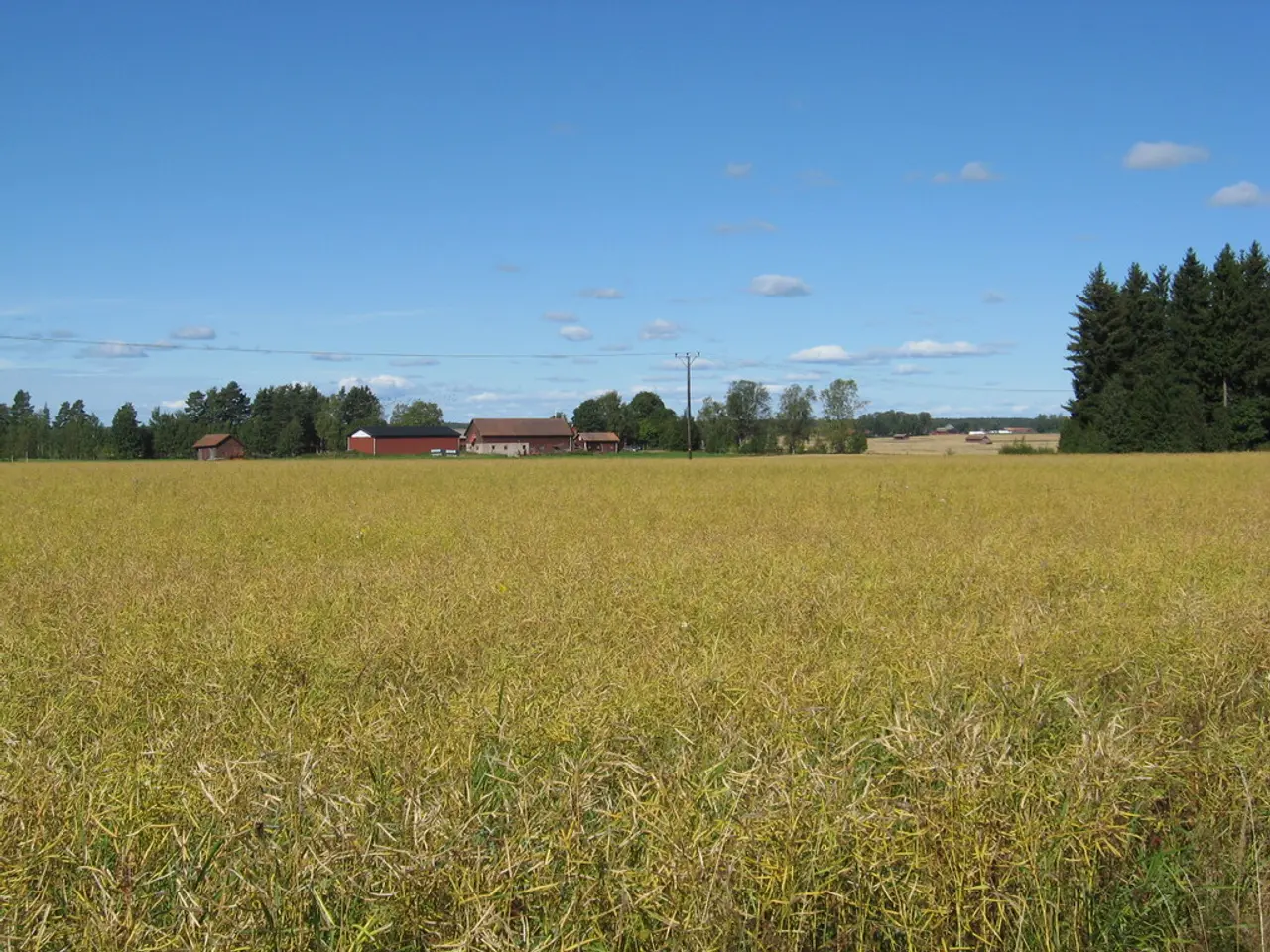If the Sun Fails to Set: Consequences and Implications
In the realms of imagination, we delve into a world where the sun never sets - a concept that stirs up a swirl of fascination and apprehension. Our lives are so intricately linked with the daily dance of the sun rising and falling, a cosmic waltz that's danced for billions of years on our little blue planet. But what if this dance were to come to a halt? What if the sun never sank below the horizon and daylight became eternal?
This scenario might sound like a far-fetched fantasy, but it poses some serious questions about life on Earth. The vacuum of darkness would disrupt ecosystems that have evolved to thrive under the spectral touch of the moon and the rhythmic beats of day and night. Plants, animals, and humans would face unprecedented challenges adapting to a globe where darkness is but a distant memory. Climates would become chaotic, with some regions scorching while others freeze, creating a living canvas of extremes.
For humans, the implications would stretch far beyond the physical world. Our sleep patterns, mental health, and energy needs would undergo a seismic shift, forcing societies to adapt in ways we can hardly fathom. Let's embark on an exploration of the scientific, environmental, and societal repercussions of a world where the sun never sets.
Embracing Eternal Daylight: A Closer Look
To truly grasp the idea of endless daylight, we need to understand that it isn't merely an extended summer in some far-flung arctic region. In this hypothetical scenario, the 24-hour day-night cycle that has governed life on Earth for eons would cease to exist. Constant daylight could result from Earth halting its rotation, a shift in the axial tilt, or a change in orbit that lines it up perpendicular to the sun.
Such a phenomenon would wreak havoc on weather patterns, ecosystems, and the delicate balance that sustains life on our planet.
The Axis of Change: Unraveling Earth's Rotation
The rotation of Earth on its axis is the foundation of our day-night cycle. completing a rotation every 24 hours, this movement creates an ebb and flow of light and darkness that patterns our natural rhythms. The consequences of Earth stopping its spin would be cataclysmic. One side of the planet would bask in unending daylight, while the other dipped into eternal darkness, creating a chasm of uninhabitable conditions that would test the limits of adaptability.
A Tilt in Fate: The Axial Tilt's Role
Earth's current axial tilt of 23.5° is responsible for the shifting seasons and varying day lengths we experience. This tilt ensures that different parts of the planet receive varying amounts of sunlight throughout the year, forming a kaleidoscope of climate and ecosystems. If this tilt were altered or realigned, the effects would be staggering. Certain regions would be bathed in perpetual sunlight, while others slid into permanent shadows, upsetting the delicate balance of life and creating an environment where survival would be a desperate struggle.
Orbital Evolution: A Shift in Perspective
A significant shift in Earth's orbit could drastically alter the distribution of sunlight across the planet. Such a change might create regions of continual daylight, setting off a cascade of environmental consequences. This imbalance could lead to severe climate disruptions, forcing life to adapt to unprecedented conditions.
Eternal Daylight's Environmental Toll
The absence of night would spark a cascade of environmental consequences, affecting ecosystems, weather patterns, and more.
Climate Chaos: Scorching Seasons
Without a cooling period at night, temperatures in sun-drenched regions would soar. This would result in:
- Never-ending heatwaves.
- Skyrocketing evaporation rates and droughts.
- Unpredictable weather patterns, intensified storms, and wildfires.
Ecosystem Erosion: Nature's Tipping Point
Plants and animals rely on day-night cycles for survival. Constant sunlight would:
- Overstimulate plants, leading to mass burnout from overexposure.
- Confuse nocturnal animals, potentially driving many to extinction.
- Upset food chains, create ecological imbalances, and alter biodiversity.
Icy Fears: Polar Perspectives
Perpetual sunlight would accelerate ice melting in the polar regions, causing catastrophic sea-level rises and the loss of Arctic ecosystems.
Human Resilience: Adapting to the Unthinkable
The disappearance of darkness would profoundly affect human health, culture, and daily routines.
Sleep Deprivation: The Toll of Waking Endlessly
Human bodies are designed for rest during the nighttime. Constant daylight would disrupt sleep patterns, leading to:
- Chronic insomnia.
- Increased stress and fatigue.
- Boosted risks of mental health issues and heart diseases.
- Decreased productivity.
Energy Consumption: The Cost of Light
With no need for artificial lighting, electricity demand might decline. However, the constant need for heating in overheated regions could skyrocket energy use.
Cultural Shifts: Adjusting to a Brighter Tomorrow
Many traditions, festivals, and practices are rooted in the day-night cycle. A sun that never sets would require societies to adapt their cultural norms, potentially leading to the loss of timeless rituals and beliefs.
Can We Thrive in Endless Daylight?
Human ingenuity has always found ways to adapt to adversity. But enduring in an eternally sunlit world would demand drastic changes.
Sun-Proof Shelters: The Need for Shade
Buildings would need reflective materials to limit heat absorption, while underground cities might become a reality to escape the relentless heat.
Artificial Nights: Engineering the Moon
Humans might create artificial "nights" using technologies like massive domes or light-blocking systems to mimic natural darkness.
Global Migration: Finding the Right Place in the Sun
Regions experiencing excessive heat would become uninhabitable, forcing mass migrations. Arctic areas, once frozen, might become the new hubs of human civilization.
Innovative Agriculture: Farming in the Shadows
Farming would require innovations like underground or vertical farms, utilizing controlled environments to manage light exposure for crops.
Lessons from the Arctic: Navigating the Nightless Days
Countries in the Arctic Circle, such as Norway and Sweden, experience extended daylight during the summer months. While they adapt to these periods, they also face challenges like insomnia and mental fatigue. Their experiences offer insights into coping mechanisms, including blackout curtains and lifestyle adjustments. However, the situation is temporary and geographical, unlike the global impact of a true sunlit Earth.
The Long Game: Future Implications
Over time, a sunlit Earth could lead to profound evolutionary changes. Species might adapt to constant light or perish, giving rise to entirely new ecosystems. Humans, too, might evolve biologically and socially to thrive in a world of endless daylight.
The Bright Side: A Thought Experiment
While a world without sunsets seems grim, it also incites a sense of wonder about humanity's resilience and adaptability. Such scenarios remind us of the delicate balance that sustains life on Earth and the importance of preserving our planet.
A Balancing Act: The Power of the Sunset
The day-night cycle is more than a recurring event; it's a lifeline for all living things. Imagining a sunless world underscores the intricate interplay between humanity and nature's rhythms. Although science and technology might help us adapt to such extremes, it serves as a stark reminder of the fragile balance that sustains life on Earth.
Appreciating this interdependence encourages us to value the natural cycles we often take for granted. After all, every sunset holds the promise of a new dawn - one that balances light and darkness in harmony.
Inquiries: Dissecting the Mystery of the Sunless World
Can the sun never set naturally?
No, Earth's rotation ensures the regular day-night cycle. However, specific regions like the Arctic Circle experience phenomena like the Midnight Sun due to Earth's axial tilt.
What would happen if Earth stopped rotating?
One side would be in perpetual daylight while the other in permanent darkness, creating a vast expanse of extreme temperatures and uninhabitable conditions.
How would humans adapt to constant light?
Humans might use technology to create artificial nights, develop heat-resistant infrastructure, and migrate to cooler regions.
Would plants survive without darkness?
Many plants rely on darkness for essential processes like respiration. Constant light would stress plants, affecting their growth and survival.
How would wildlife be impacted?
Nocturnal animals would struggle to survive, disrupting food chains and ecosystems. Many species might face extinction.
[1] Statius, A., & Gesine, M. (2020). The Impact of Earth’s Rotational Angular Momentum: The Coriolis Effect European Journal of Physics
[3] Heinrich, H., & Smith, D. (2012). Climate Extremes and Axis Tilt: Theory and Data Science
[5] Le Treut, H., & Jouzel, J. (2008). Milankovitch Cycles and Climate Proceedings of the National Academy of Sciences
- The constant daylight of a stationary Earth could result in never-ending heatwaves, skyrocketing evaporation rates, and unpredictable weather patterns.
- With the disappearance of night comes the challenge of adapting human sleep patterns, leading to chronic insomnia, increased stress, and boosted risks of mental health issues and heart diseases.
- As human survival demands, societies may engineer artificial "nights" using advanced technologies, massive domes, or light-blocking systems to maintain a semblance of natural darkness.
- Without the cooling periods at night, agriculture would need innovations such as underground or vertical farms, utilizing controlled environments to manage light exposure for crops.
- As human civilization adapts to a sunlit world, evolutionary changes may occur, giving rise to new species and ecosystems that thrive in the constant light.








